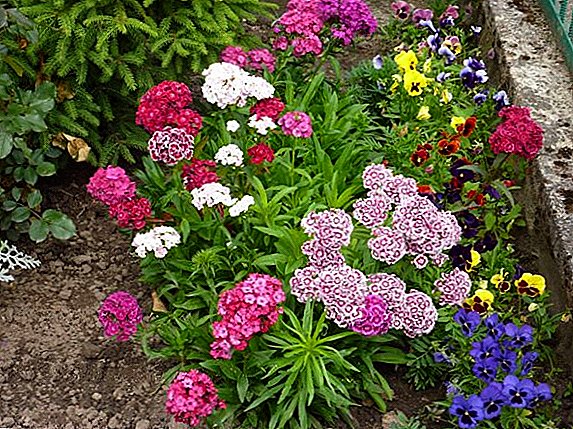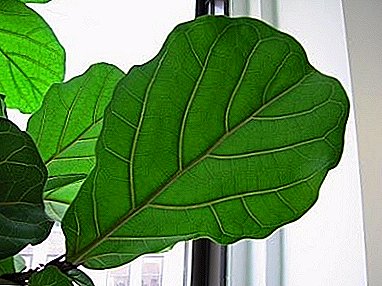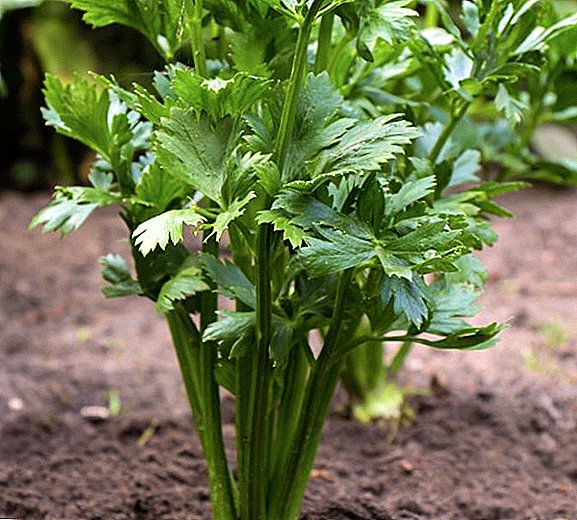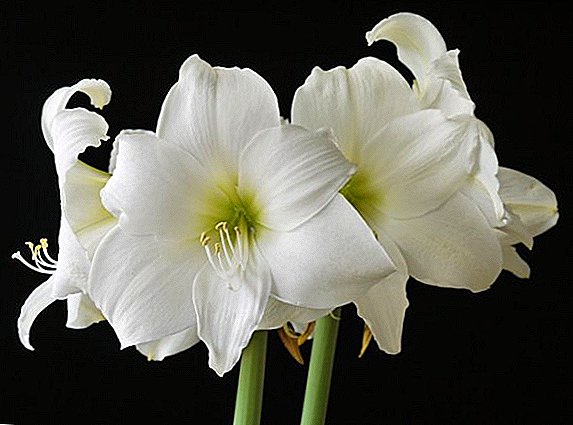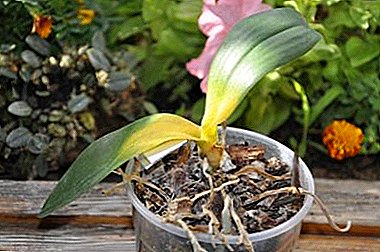
Anyone who has ever met this beautiful flower will not remain indifferent. Like any plant, an orchid needs individual care.
In the article you can read a description of various diseases of this exotic plant, as well as see photos of these ailments and learn how to reanimate a flower in order to save it. And also tell you how to avoid the above problems.
What are diseases, how do they look, how do they differ from defeats by pests?
If trouble happened with an orchid, first of all, its leaves will signal it. They may fade, fall off, change color or dry. The most common diseases that can be found are divided into two types.
- Viral diseases. Symptoms may be spots or stains on the leaves. In most cases, viral diseases are not treated, and the plant must be disposed of.
- Diseases of fungal nature. Symptoms can be dark yellow and pink circles. The reasons most often lie in excessive watering.
- Diseases of a bacterial nature. Infected tissue becomes soft and becomes covered with ulcers from which the cell sap is released.
Important! Black spots on the plant can also be due to hard water. You can wipe the plant with a weak solution of water with citrus juice.
Common Ailments
Consider the most common diseases of this amazing flower. Non-infectious plant diseases are considered the most frequent. Plants are affected by fungal diseases and rot due to excessive watering and excess moisture in the core. There are also such pests as bacterial blotch, rot, various viruses, anthracnose, fusarium.
 One of the most common diseases is leaf spotting. Wet brown spots appear on the leaves. They are formed due to uneven watering, excessive sunlight. You can save the plant only if the florist noticed in time that something was wrong. Then the affected leaves are removed, the plant is sprayed with certain solutions depending on the type of disease. Sick leaves are removed.
One of the most common diseases is leaf spotting. Wet brown spots appear on the leaves. They are formed due to uneven watering, excessive sunlight. You can save the plant only if the florist noticed in time that something was wrong. Then the affected leaves are removed, the plant is sprayed with certain solutions depending on the type of disease. Sick leaves are removed.
In viral diseases, the orchid is isolated to avoid contamination of other plants in the neighborhood.
What are the reasons?
Phalaenopsis infection occurs for a variety of reasons. This can be a direct hit on the flower of sunlight that burns the leaves of delicate orchids. An excessive amount of moisture, as a result of their frequent irrigation, necessarily leads to rotting, death of roots or other sad consequences. The cold is also not useful to the plant.
Hypothermia or freezing of the leaves leads to their yellowing and subsequent death. Poor lighting can also cause some problems with the plant. Too hot air can also negatively affect the general well-being of the plant. This may be worse than the direct hit of the rays of the sun, as the process of wilting of the inflorescences and leaves occurs.
How to determine whether the plant is sick or attacked by pests?
There are not so many pests, and they all have clear distinguishing features. For example, if a plant is affected by an aphid, then there will definitely be mucus. With a spider mite, a white spider web and dark spots can be observed. If the flower overcomes the nematode, then there will certainly be a bump of a light shade.
What parts of the plant are affected?
Various diseases can affect both the leaves and the inflorescences, the roots or the stem of the flower. Mostly, of course, Phalaenopsis leaves suffer. Leaves play a huge role in his life. After all, they, along with the roots are involved in photosynthesis, absorbing light.
And through the leaves the flower carries the breath. This part of the flower is a kind of alarm that notifies the florist that it is time to take action. Diseased leaves are not able to give the plant adequate nutrition, and the whole flower suffers. That is why such signals should be heeded.
Healthy leaves saturated green. Have a dense structure.
Description, treatment of diseases and their photos
Anthracnose

A very common disease of this type of plant. The focus of the disease are the leaves. Small round specks on them eventually turn black and become concave. Then a pink or yellow bloom appears. The most common cause of such trouble is the high humidity. Or the florist allowed water into the flower outlet.
Treatment: affected leaves are removed, and the places of their slices are cauterized with iodine. When too neglected state can help tools such as fast, ritomil, mikasan.
Rust

Unlike anthracnose, this disease is very rare. This fungal disease primarily affects phalaenopsis leaves. It manifests itself in the form of spots on the inside of the sheet, which have a reddish tint. The method of treatment can be the same as for a plant suffering from anthracnose.
All damaged areas are to be removed, and the sections are treated with a weak alcohol solution or activated carbon. Orchid treatment is carried out by spraying with the means: mikasan, skor and ritomil
Mealy dew

This common fungal and very dangerous infection manifests itself in the form of a purple-white bloom on the foliage. Externally, the flower looks as if the plant is sprinkled with flour. In cases of phalaenopsis mildew, death is almost inevitable.
The reason is usually high humidity and high temperature in the room (bath effect). With the preventive purpose they produce spraying with phytosporin. Plant treatment is carried out by spraying with an agent soon or a mixture of colloidal sulfur.
Various fungi of roots and leaves
Fungal diseases are distinguished by bloom on the leaves. They progress very quickly, and everything ends with the death of the plant. The most common type of fungus is fusarium. First, the roots are affected, the growing point, and then the fungus moves to the whole plant. In most cases, the plant is destroyed. As a prevention, you need to monitor the purity of the pot and the substrate.
Rot

Gray rot looks on foliage as brown and black specks with a fluffy formation. The reason lies in the high air humidity. For prevention, it is advised to use kendal for watering. This remedy increases disease resistance.
It is also necessary to spray with a fungicide. Plant survival is low. Urgently remove the affected areas and foliage, and cut the areas soaked with colloidal sulfur. One of the treatment options is performed with the full immersion of an orchid in a 0.3% mixture of foundation. Immersion should be carried out daily for 2 weeks.
Recommendation. For prevention, the orchid is sprayed with a weak solution of vitriol once a month.
Emergency resuscitation at home
If the florist has seen obvious problems, changes in the state of the leaves or the peduncle, then it is time to take urgent measures to reanimate. To understand how to save phalaenopsis, first determine the cause and extent of the incident.
- Carefully inspect the root system. Healthy young roots have a greenish tint, and old - brown. The touch is smooth and dry. Any darkening, mucus, fluid leakage or softening indicates rot.
- Remove damaged roots, wash the remaining ones. If up to 40% of the root system is gone, then there is still a chance for survival.
- Prepare a container with expanded clay. Top add well steamed and peeled sphagnum.
- From above we lay a sheet rosette, cover it with a film and wait for the formation of roots up to 5 cm. It turns out a kind of greenhouse with a temperature of 22-28 degrees and humidity of 70-100%. In addition, you need good lighting up to 12 hours a day.
If there is no opportunity to make a greenhouse, then we will use another way.
- Remove damaged roots.
- We process places of cuts with activated carbon.
- We place the outlet in the filtered water. Change the water daily. To enhance growth, you can add a little sugar.
Leaves should be above water.
Prevention
Summarizing, we can draw the following conclusions. If the air temperature is too high, then the room should be aired more often. This also applies to high humidity. The pots should stand at a distance from each other, so that the flowers are not crowded. Water should not be in the sockets, or on the leaves. Watering is allowed only at the beginning of the day. All these rules will help prevent a lot of problems and that the orchid is sick.


